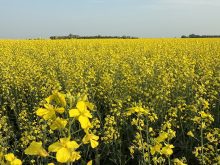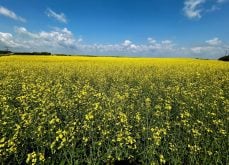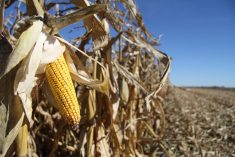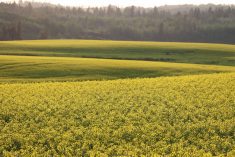SASKATOON — It seems like every oilseed crop is vying to be a biofuel feedstock, with one notable exception.
“Flax is kind of the odd man out,” said Dale Leftwich, policy manager for the Saskatchewan Flax Development Commission.
He doesn’t know why that is the case.
Read Also

Fertilizer method’s link to emissions studied
A researcher says others studying greenhouse gas emissions aren’t considering how the loss of nitrogen into the atmosphere correlates with fertilizer application or if there is an impact to yield.
“I’m not sure what all of the reasons would be for a lack of enthusiasm, but certainly we’re hoping that it does become part of that entire (biofuel feedstock) idea,” said Leftwich.
Other oilseed commodity groups have been busy trying to position their crops as viable feedstocks for biodiesel, renewable diesel and sustainable aviation fuel.
Soybeans and canola are the big ones, but numerous alternatives such as camelina, brassica carinata and pennycress are vying for a share of the massive emerging market for oilseeds.
Flax is seldom if ever mentioned as a contender.
“The canola industry has pushed very hard on this, and the flax industry hasn’t as of yet,” said Leftwich.
“But it’s the kind of thing that we probably need to do.”
Barry Coleman, executive director of AmeriFlax, which represents North Dakota’s flax growers, said it “never even crossed the minds” of U.S. flax growers to lobby the Environmental Protection Agency to have flax approved as a feedstock for renewable diesel and sustainable aviation fuel.
“Nobody even considered it,” he said.
Flax production had become so small that existing food and industrial uses were considered sufficient.
U.S. farmers planted an estimated 107,000 acres of the crop this year, down from 178,000 last year.
Flax has become a niche crop, but Coleman thinks maybe it is time for Canadian and U.S. growers to get together and chat about the potential for the crop as a biofuel feedstock.
Leftwich said flax seed is 45 percent oil, so it could be a good candidate.
Canadian farmers are planting an estimated 511,290 acres of the oilseed in 2024, down from more than two million acres in the late-1990s.
North America’s growers are getting pummeled in important international markets such as China by cheap flax from Russia and Kazakhstan.
Cultivating a new market in their own backyard could help swing the pendulum back in their favour.
Flax was once used only for industrial purposes, but lately the marketing focus has changed.
“The main idea behind flax for quite a while has been what a great, nutritious food it is,” said Leftwich.
“The flax industry has gone in that direction in terms of trying to create a higher value for the seed because of its nutritious qualities.”
However, he thinks it might be time to revisit industrial demand.
“It is the kind of thing that we will be getting behind in terms of making sure that we have markets for flax,” said Leftwich.
“It just hasn’t been the focus to this point.”
Flax has advantages over some of the competing fledgling oilseed crops because farmers are familiar with growing it. It has been in their rotations in the past.
It works well as a substitute oilseed when farmers face disease pressure from growing too much canola.
“It is genetically far enough away from canola to be a good break from canola,” he said.
Clubroot doesn’t affect flax, and while it is susceptible to sclerotinia, the disease doesn’t affect the crop as adversely as it does canola.
As well, it is a broadleaf, so it provides a good break from growing grass crops such as wheat, durum, barley and oats, said Leftwich.
Many of the existing canola crush plants can be switched over to crushing flax. Bunge’s crush plant in Harrowby, Man., used to do that regularly.
However, significant obstacles must be addressed before growers will be willing to expand acreage.
“What we need to have is better varieties and we need to figure out what to do with the straw,” said Leftwich.
There needs to be higher-yielding varieties, ones that grow well north of Highway 16, better disease resistance and traits that address the indeterminate nature of the crop.
“You get a rain in August and the crop will turn green again,” he said.
Coleman said private sector seed companies are not interested in developing new flax varieties.
That has stifled enthusiasm for growing the crop.
Business risk management programs have also been lacking, but there is good news on that front for U.S. farmers.
The USDA’s Risk Management Agency recently announced that it is bolstering its crop insurance program for the crop starting next year.


















